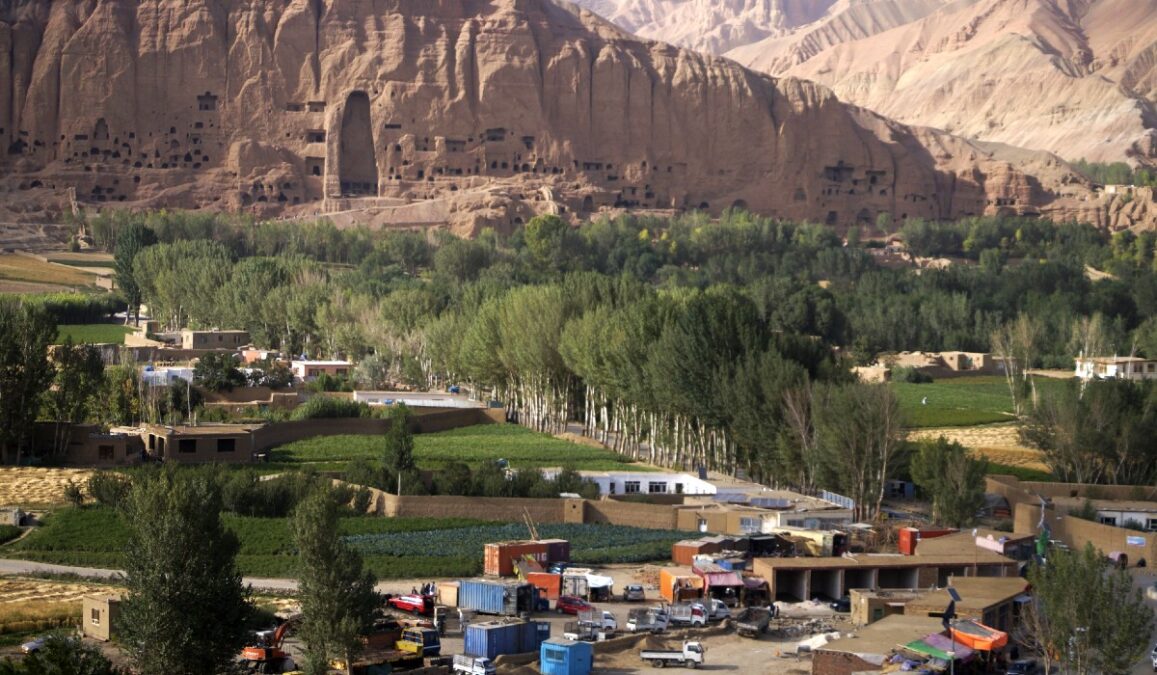Concerns have grown over the fate of historical sites in Bamiyan, especially an ancient bazaar near the cliff that held the Bamiyan Buddha statues where the Taliban has announced to build of a tourism complex.
The information and culture directorate of the Taliban in Bamiyan at a ceremony on Monday, August 1, announced the launch of a project to rebuild a historic bazaar in the area that was destroyed in the conflicts in the 1990s.
When inaugurating the project, the head of the information and culture of the Taliban in Bamiyan, Saifurrahman Mohammadi, said the plan would be implemented by the Ministry of Information and Culture in coordination with UNESCO.
He said those who want to rebuild their shops in the ancient bazaar should provide documents to his directorate first.
He added that he is sure the reconstruction of the ancient bazaar will improve tourism in the province and will attract more tourists to the province
But one day after that, Mohammadi told Amu that the project has stopped “over considerations by UNESCO.”
The project aims to change the area into a tourism center with restaurants, guesthouses, parking, public toilets, as well as handicraft and grocery shops.
UNESCO did not respond to Amu when asked about its presence in Bamiyan, but The Guardian says the organization has shown its opposition to the ancient bazaar reconstruction plan.

Two archaeological experts and activists who served in the information and culture directorate in Bamiyan under the previous government said Bamiyan’s cultural and historical sites are prone to “huge damage” if not prevented.
One of them, Baqir Ahmadi, a former archaeological expert in Bamiyan, claimed that three relics, including the head of a statue, a copy of the Holy Quran, and a statue are missing from a warehouse in front of the Buddha statues.
He also claimed that holes around the Buddhas of Bamiyan have been seized by the people and some of them are used for keeping animals. According to him, the area was protected under the previous government, and organizations like UNESCO were involved in such efforts.
“Most of the restricted or red zones or the ancient zones and the zones marked by UNESCO have been grabbed and damaged,” said Ishaq Mowahid, former head of the information and culture directorate of Bamiyan.
“Some construction works have happened in restricted zones following the fall of the previous government,” Mowahid said. “The Taliban should pay serious attention to this matter because the historical sites and relics belong to humanity and they are a shared heritage of Afghanistan and the world.”
Mowahid added that moves like building a complex near the Buddhas of Bamiyan in the ancient bazaar are attempts to satisfy the people and it would have alarming consequences.
According to the two former officials, the idea of reconstruction of the ancient bazaar was on the table for years but they were never allowed to implement such a project.
They said that based on one plan, an archaeological park was planned to be built in the ancient bazaar but to build this, people’s lands were expected to be purchased by the government to implement the project.
Besides having a city master plan, Bamiyan is one of the few cities that has a cultural master plan, which was drafted by national and international experts in 2006 and was made the basis for all development and infrastructural plans in the province. Governments in Afghanistan are responsible to protect historical and ancient sites in Bamiyan under international laws.





